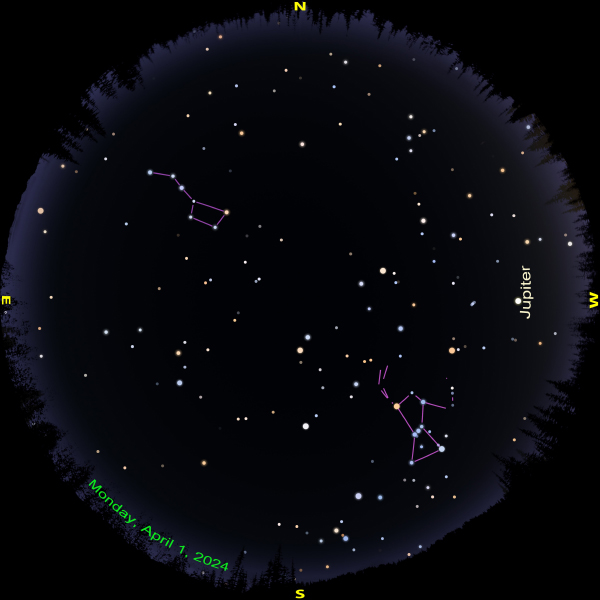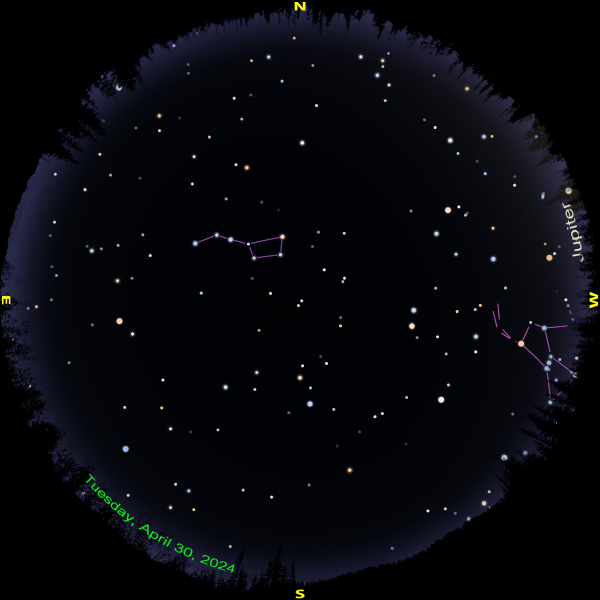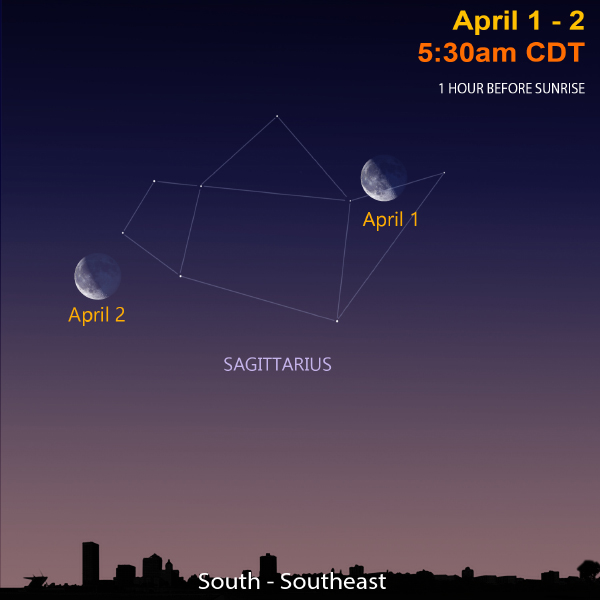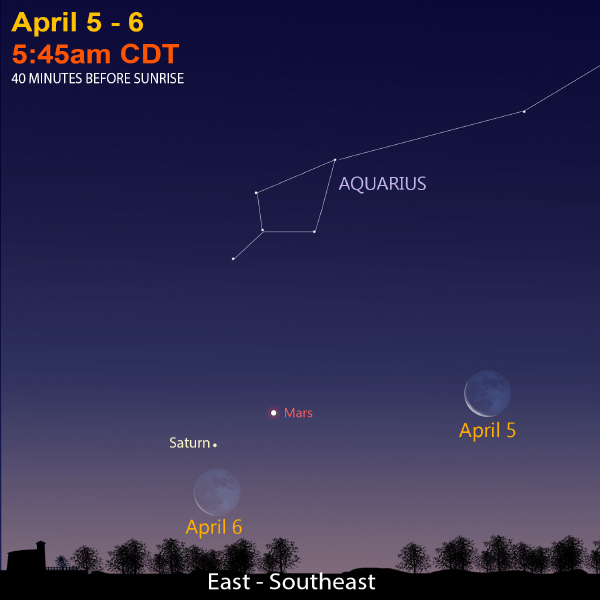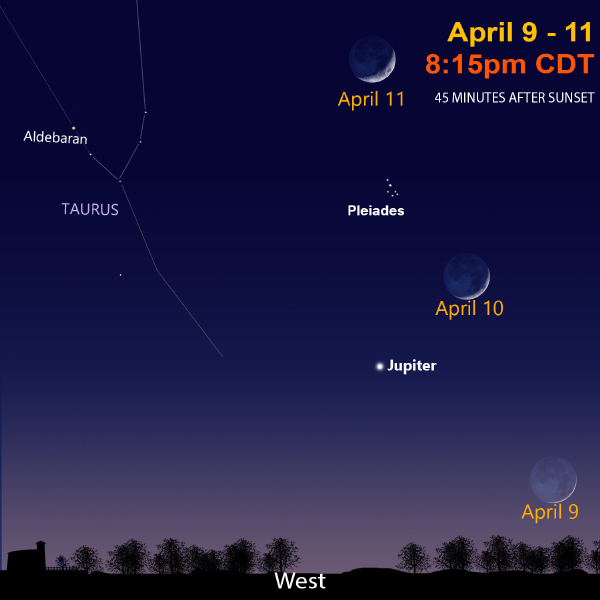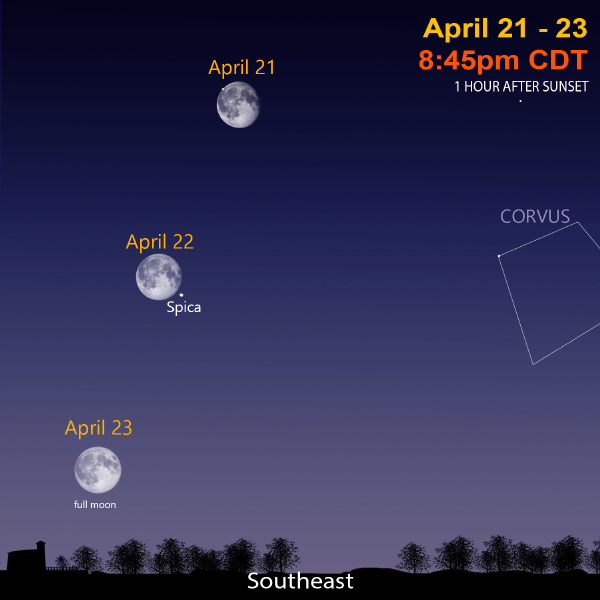Cosmic Curiosities
“These late eclipses in the sun and moon portend no good to us. […] Love cools, friendship falls off, brothers divide; in cities, mutinies; in countries, discord; in palaces, treason…”
- William Shakespeare, from King Lear
Shakespeare and the Stars
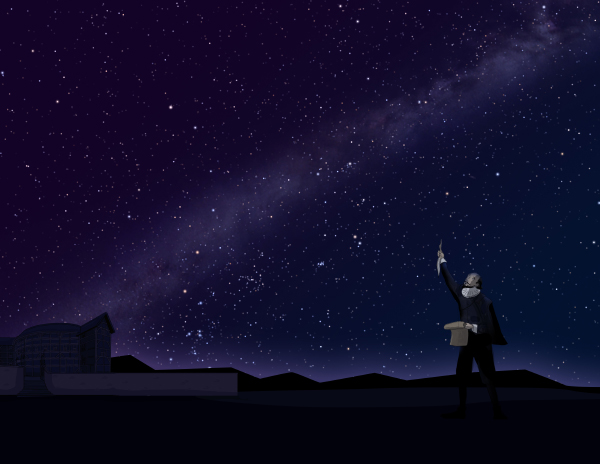
This April 23, 2024, is Shakespeare Day. It marks the 460th birthday of the great playwright, poet, and actor William Shakespeare. He was born in Stratford-upon-Avon, England. I have read a lot of his work and seen many of his plays. My mind always perks up when I hear the connection between Shakespeare and the stars.
My favorite lines are probably these from Romeo & Juliet:
“When he shall die,
Take him and cut him out in little stars,
And he will make the face of heaven so fine
That all the world will be in love with night
And pay no worship to the garish sun.”
You may be surprised to know that Shakespeare refers to the heavens quite a bit in his work. According to the paper “Shakespeare’s Astronomy” by Dorothea Havens Chappell, stellar objects are mentioned more than 400 times in his plays and more than 60 times in his poems! We do not know why exactly the Bard of Avon wrote so many stellar connections. There are many theories.
One theory is simply that four centuries ago, Shakespeare would have seen many more stars than we do today. With no city-light pollution, the stars would have been much more prevalent and noticeable. Shakespeare also may have been intrigued by two supernovae that appeared in 1572 (when he was eight) and 1604 (when he was 40). These bright explosions of massive stars were as bright as Venus and lasted for months. They would have been the talk of England and many other lands across the globe.
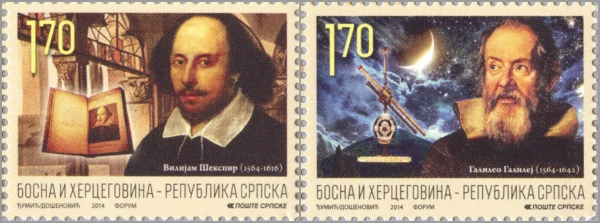
Shakespeare and Galileo Stamps from Bosnia-Serbia, 2014
Maybe Shakespeare’s references to the stars above were because of the astronomical paradigm shift that was gaining ground.
Galileo Galilei was born on February 15, 1564, in Pisa, Italy, just two months before Shakespeare’s birth. Galileo went on to explore the nature of the heavens, and Shakespeare decided to explore human nature in his poems and plays.
Galileo was influenced by Nicholas Copernicus, who placed the sun at the center of the universe and said the Earth is what moves. This was a radical shift in how everyone viewed the world around them. Galileo, with his new telescope, went on to prove that the heavens were not pure; they had blemishes. He saw craters on the moon and spots on the sun. He saw four moons going around Jupiter, proving that everything did not circle the Earth.
Science and the arts were blossoming then. Though the timeframe is arbitrary, the Scientific Revolution lasted from 1500 to 1700. New ways of looking at the natural world were picking up speed. Printing was invented. Travel increased. Communication between distant lands was happening more frequently. Maybe Shakespeare caught wind of all these changes taking place. Maybe he read about Galileo and other famous people who had new views on the heavens. He may have known of the writings of people like Johannes Kepler, Giordano Bruno, Tycho Brahe, and many others. There is no proof of this; we have no direct records of Shakespeare commenting on Galileo or any of the new astronomical ideas of the time.
Though we do not know what influenced him directly, we can still enjoy his amazing array of work, especially (for me) his poetic words about the starry sky.
Planet Patience
Do you ever look up at night and think that bright red light is Mars? Then, a second or two later, your brain says, “Maybe it’s not Mars; maybe it’s a red star like Antares or Aldebaran”? Time for a refresher on finding planets in the night sky!
TWINKLING
One key difference between stars and planets is the amount of twinkling, or scientifically, scintillation. Both stars and planets twinkle as their light passes through our atmosphere. The light gets refracted or bounced around by all the moving air molecules.
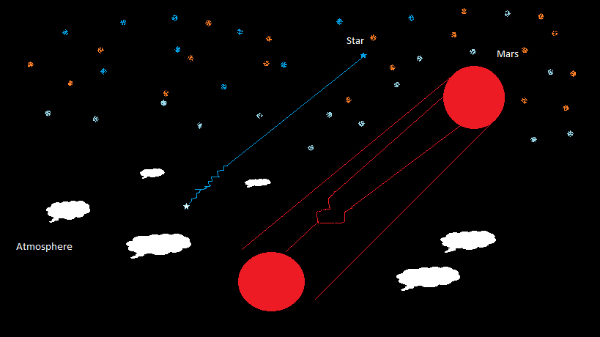
The difference is planets are incredibly closer than stars. Any star in the sky is ultra faraway, so they appear as pinpoints. Their beam of light is very narrow. It is easier for our atmosphere to bend this narrow light path. A star's twinkling can be very noticeable to human eyes. When a star is near the horizon, it increasingly twinkles because the starlight is passing through more air than when the star is high above.
Planets are much closer to Earth than stars. We see them as small disks of light. Their light beams are wider than stars. This makes it tougher for the Earth’s air to bend their thicker light. So, planets do not twinkle as much as stars.
ECLIPTIC
Our solar system is flat, like a giant frisbee, generally speaking. The sun sits in the middle with the planets going around like a big wheel. This shape causes the planets to take a certain path across the sky. We call it the ecliptic.
The ecliptic is the apparent path of the sun in the sky. As we all experience, the sun’s path varies with the seasons. As you watch the video, you will see our sun take its lowest path at the winter solstice. At the equinoxes, the sun’s path is higher as it rises due east and sets due west. At the summer solstice, the sun takes its highest path across the sky. These changes happen because the Earth’s rotational axis is tilted by 23.5 degrees as it orbits the sun. The planets follow very close to the sun’s path on the ecliptic because of our flat solar system. Planets’ orbits are tipped by only a few degrees from Earth’s orbit. So, we always find the planets, like the sun, rising somewhere between southeast and northeast (to their highest point in the south) and setting between southwest and northwest.
You will never find a planet near the very top of the sky, nor in the north sky. So, please, do not look for Mars near the north star or the big dipper.
NOT THE BRIGHTEST
Many stargazers have heard somewhere that “planets are the brightest ‘stars’ in the sky.” This is not true. Two planets, Venus and Jupiter, always outshine any nighttime star. Venus is so bright, it’s the number one-reported “UFO.”
Mars, when it’s closer to Earth, can outshine any star at night. When the red planet is farther away, it grows much dimmer, and many stars outshine it. Saturn and Mercury have a few stars that generally are brighter. Uranus and Neptune are big planets, but too far away to spot with our eyes; you would need a telescope. And, before you ask, Pluto is way too small and distant to ever see with the human eye!
WANDERING STARS
Planet is a Greek word meaning “wandering star.” Planets all “wander” at different speeds. We take one year to orbit the sun here on planet Earth. Mercury takes three months. Saturn takes almost 30 years! These variances cause the planets to “sort of” line up at times (I say “sort of” because they never line up perfectly).
When they loosely line up, we see all five planets at the same time in the sky. This is rare, but fun to view in the night sky. But the planets can also “sort of” line up with the sun; when lost in the sun’s glare, we are “planet-less.”
Happy planet hunting!
Final Eclipse Thoughts
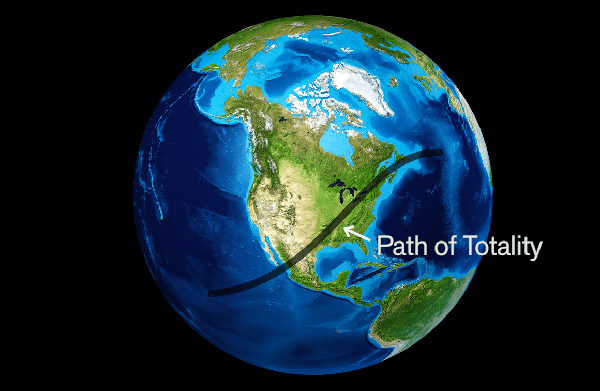
It’s wild to think that millions of people are getting ready for the big solar eclipse on April 8. Estimates say 31 million people live in the path of totality. Also, at least one million people will travel to the path of totality — the narrow band making the moon’s dark shadow. It stretches from Texas to Maine in the United States. It starts in Mexico and will finish in Canada.
SAFETY
Never look at the sun directly during the eclipse. Even at 99% eclipsed by the moon, our star is so powerful it can still damage your eyes. Get yourself some eclipse glasses. Share them with family or friends. To stay safe, use one of the many pin-hole projection methods.
SCARY TO SCIENCE TO SPECTACULAR
Long ago, eclipses spelled doom: The slow, eerie darkening of the sky during the day meant the end of the sun, the end of life. More than 2,000 years ago, the Babylonians began figuring out how to predict eclipses by carefully noticing the sun’s and moon’s natural cycles. It took a while, but the first accurate total solar eclipse prediction came from Edmund Halley in 1715. After that, scientists started to use totality to discover more about the sun. In 1868, they discovered Helium. In 1919, Einstein’s theory of relativity was proved by a total solar eclipse.
NASA’s SOHO Space Telescope, which can eclipse the sun on a regular basis from their other telescopes. They can study solar flares and coronal mass ejections that affect the Earth.
Today, science studies are done during totality, but they are not as crucial as they once were. Now, it’s more about witnessing something rare, beautiful, and spectacular. It is taking time to enjoy and experience an amazing natural event that is hard to put into words. But we try. For me, it comes down to simply being thankful for our two brightest lights, the sun and moon; to take in all the precious moments when they join each other in the sky.
WEATHER
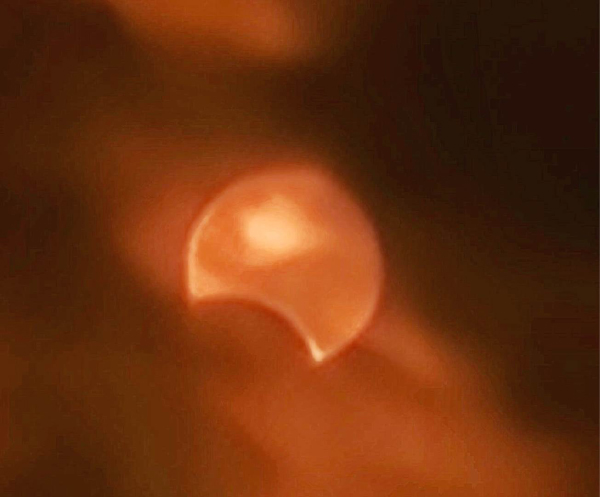 Mark Twain once stated, “Climate is what we expect; weather is what we get.” Excitement grows as the eclipse nears. But weather anxiety persists, too. Will clears skies await our eyes? There’s not much one can do if nature’s clouds block this rare sky spectacle. From what I read, it’s still a wild experience. It still gets dark. The natural world around you is unsettling and spooky.
Mark Twain once stated, “Climate is what we expect; weather is what we get.” Excitement grows as the eclipse nears. But weather anxiety persists, too. Will clears skies await our eyes? There’s not much one can do if nature’s clouds block this rare sky spectacle. From what I read, it’s still a wild experience. It still gets dark. The natural world around you is unsettling and spooky.
My expectation is for a blue sky. I have been spoiled. I have seen six total solar eclipses, and it has been clear each time. I am hoping to make it seven-for-seven as we take a group of 60 people to Texas. The best a person can do to achieve a clear eclipse sky is to scan the weather forecasts closely. Then, move to that clear sky prediction spot—and hope it stays that way!
Space in Sixty Seconds
Explore the April 8 eclipse and the last chance to see Jupiter and Orion.
Sky Sights
Watch the waning Moon pass through the stars of Sagittarius on April 1-2. Then, a few nights later on April 5-6, watch our nightlight pass Mars and Saturn as it heads for its eclipse-rendezvous with the sun!
Mars and Saturn are not easy to see as they are very low in the ESE morning sky. They will be easier to see in May and June.
The Moon reappears after its eclipse encounter as a waxing crescent. Look for it orbiting past bright Jupiter from April 9-11 shortly after sunset.
The Moon grows big (full moon on April 23) and nears the bright star Spica in the constellation Virgo.
Venus is too close to the sun to be seen this month. The hottest planet is heading towards superior conjunction on June 4. This is when it passes behind the sun. Venus will be seen again in the evening sky in early July.
Mercury is visible in very early April shortly after sunset.
April Star Map
Sign Up
Receive this newsletter via email!
Subscribe
See the Universe through a telescope
Join one of the Milwaukee-area astronomy clubs and spot craters on the Moon, the rings of Saturn, the moons of Jupiter, and much more.
Follow Bob on social media
Twitter: @MPMPlanetarium
Facebook: Daniel M. Soref Planetarium


